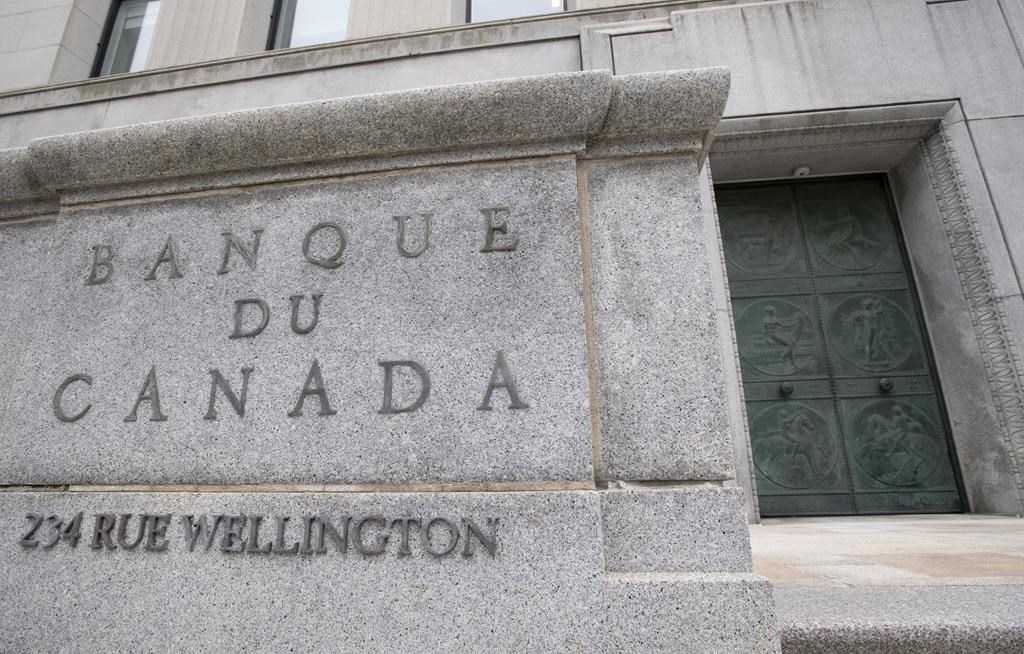Bank of Canada hikes key interest rate to 0.5%, major banks follow suit

Posted March 2, 2022 10:08 am.
Last Updated March 2, 2022 4:03 pm.
Numerous Canadian banks said Wednesday that they are increasing their prime interest rate by 25 basis points following the Bank of Canada’s rate announcement earlier in the day.
The central bank said it was increasing its key rate by a quarter of a percentage point to 0.5 per cent in a bid to help fight inflation which is at its highest level since 1991.
Canada’s Big Five banks — RBC, TD Bank, BMO, CIBC, and Scotiabank — all said they would increase their prime rates to 2.70 from 2.45 per cent, effective March 3.
Desjardins Group and Equitable Bank also said they would follow through on the same rate change.
The rise in rates will increase the cost of loans such as variable-rate mortgages that are linked to the benchmark, but won’t directly affect fixed-rate mortgages.
The Bank of Canada said it would likely need to raise rates further to reduce inflation, which hit 5.1 per cent in January.
Rate hikes in the past took place before the economy hit its full potential and inflation went up, said TD chief economist Beata Caranci. But circumstances are the opposite now, she said, raising the pressure on the bank to get right the timing and pace of hikes.
“They have actually less wiggle room because we are in a high inflation environment and they weren’t proactive as they were in past cycles,” she said.
“On the flip side, if things go horribly from an economic perspective, they don’t have room now to cut because we’re not at a level where they could give back stimulus.”
It was two years ago this week that the Bank of Canada first cut its key policy rate to get ahead of economic fallout from the emerging novel coronavirus crisis. What followed were two more rate cuts in March 2020 that brought the key policy rate to 0.25 per cent.
Since then, the economy has bounced back quickly.
Statistics Canada said Tuesday that the economy grew at an annual rate of 6.7 per cent over the last three months of 2021, which was stronger than the Bank of Canada had expected, and real gross domestic product is now above pre-pandemic levels.
The bank said it expects growth in the first quarter of this year to be more solid than its previous projections in January, even with an Omicron-related setback that month that saw 200,000 jobs lost.
It expects the labour market setback to be temporary, and strong household spending should strengthen further as public health restrictions ease as several provinces have started to do this month.
Adding to existing inflationary pressures is Russia’s unprovoked invasion of Ukraine, which has sent global oil prices higher and added new kinks to global supply chains.
In response, Industry Minister François-Philippe Champagne told reporters on Parliament Hill that he has asked the Competition Bureau to keep an eye on prices at the pumps, and spoken to companies about boosting domestic production to counteract any possible shortages.
Even though the bank can’t specifically fight inflation linked to the conflict, it can tackle domestic price increases like those in the country’s housing market, said Royce Mendes, managing director and head of macro strategy at Desjardins.
The bank hopes that by making it more expensive to borrow, demand from buyers will cool.
“These are the types of inflationary pressures that the Bank of Canada can contain with increasing its interest rates and that’s what it’s trying to do,” Mendes said.
The first rate hike may have the largest affect on how households manage their debt, but the central bank would have to raise rates by a full percentage point before there is an effect on the country’s housing market, said BMO chief economist Douglas Porter.
“Every single basis point matters to somebody out there,” Porter said. (A basis point is a one-hundredth of a percentage point.)
“We’d need to see a number of Bank of Canada interest rate hikes before it would really begin to seriously affect the economy.”
A rate hike generally takes as little as six months or as many as 18 months before it has an effect on headline inflation.
Of more immediate concern for the bank’s senior decisionmakers, and noted in Wednesday’s announcement, is that Canadians are starting to expect that inflation will stay higher for longer, which could lead to runaway inflation.
“In this sense, inflation expectations cause inflation,” said Tu Nguyen, an economist with RSM Canada. “So the bank taking actions and taking on a hawkish tone can help, in a way, reassure consumers and businesses to that know this bout of high inflation is not going to last forever.”








